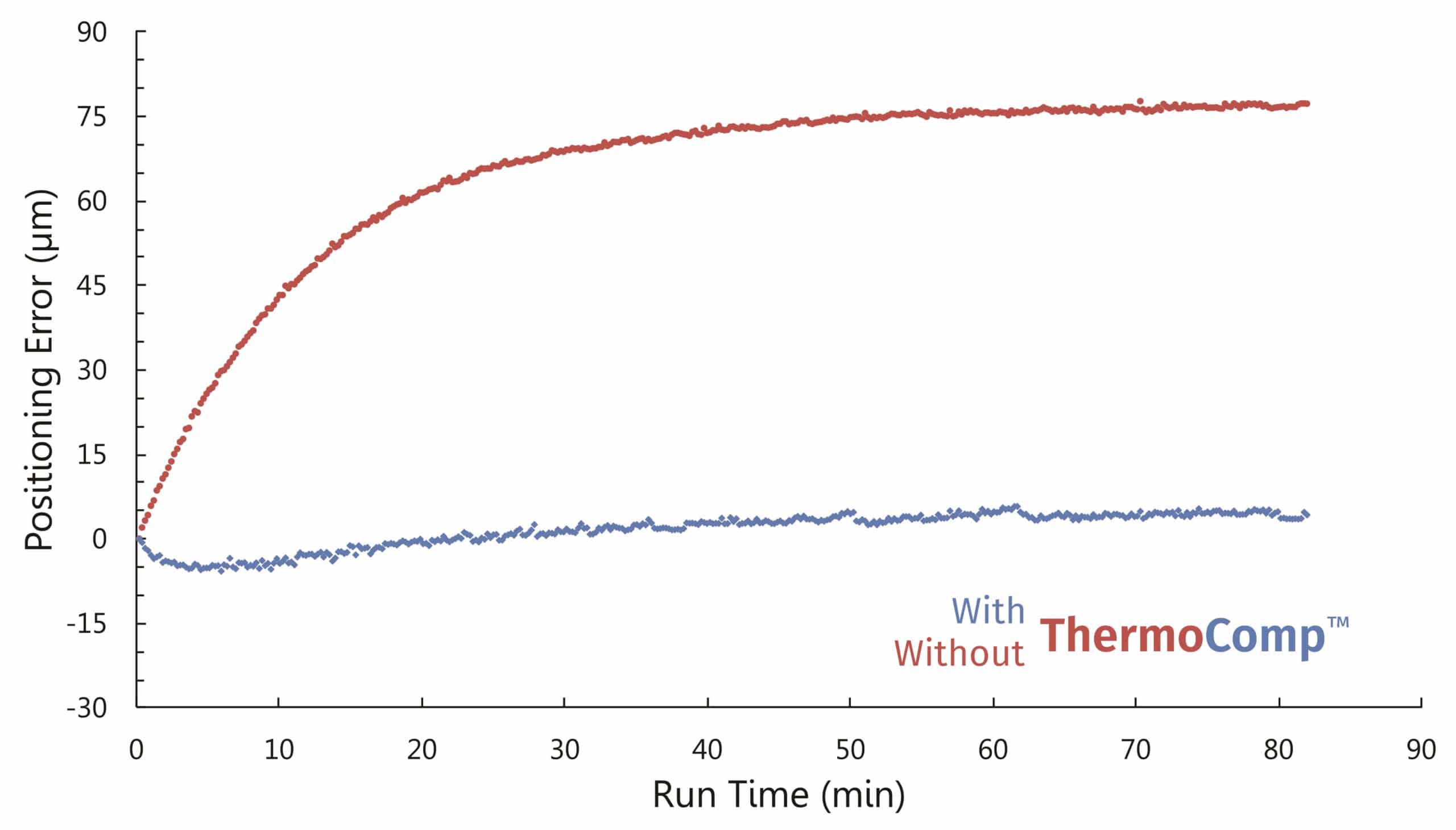Aerospace & Defense, Capability Overview, Custom Engineered Motion Systems, Data Storage, Electronics, Gantries, Integrated Automation Systems, Laser Systems, Medical Device Manufacturing, Motion Control Platforms, Precision Manufacturing, Science & Research Institutions, Semiconductor, Stages & Actuators, Test & Inspection
Capability Overview
ThermoComp® Integrated Temperature Compensation
Thermal error management has been a major concern of precision machine designers since the 19th century. To this day, temperature changes and thermal effects are still some of the largest error sources in precision machines. One major reason for this is the difficulty and often extreme expense associated with designing a thermally insensitive machine.
Most frequently the approach to reducing thermal errors is to regulate the environment in which the machine operates, thereby mitigating the need for thermal insensitivity. This method, although successful at minimizing thermal effects, is inordinately expensive when maintaining precise building temperature control, and always adds to production quality risks due to the inherently unreliable stability of most air-conditioning systems.
The level of environmental stability achieved in most industrial facilities, even where great expense and care is taken to regulate the building’s air conditioning systems, can be wholly inadequate for many high-precision manufacturing processes. Figure 1 shows the temperature stability of a typical lab-grade industrial facility, showing variations upwards of 0.5°C over the course of one hour. Not only will the average environment vary with time, but significant gradients can occur across the volume of a production facility. Multiple air-conditioning units are used in symphony in large facilities, causing spatially varying environmental dynamics across the production floor. This affects not only each machine’s output quality with time, but also the quality output from machine to machine.


As a result, machine positioning accuracy is hindered by the stability, or lack thereof, of a facility’s environmental control, even when employing relatively expensive air-conditioning hardware. Figure 2 illustrates the positioning effects of an above-average production environment by showing measured positioning error on a real system undergoing a step-and-scan measurement procedure in the environment shown in Figure 1. The machine’s accuracy in the step direction (X axis) is directly tied to the abilities of the air-conditioning system rather than those of the stage and controller because of the duration of the test. This level of impact would be unacceptable in any number of precision processes, yet there has been little ability to cost-effectively reduce these types of effects on precision positioning equipment, until now.
Aerotech’s new product feature, ThermoComp®, provides much needed relief from nearly all of the effects of thermal instability on the precision positioning components of a machine when using Aerotech equipment. ThermoComp is a complete mechatronic solution to thermal errors. Through the employment of integrated hardware and sensors, and a proprietary compensation algorithm implemented via the Automation1 controller software, ThermoComp all but eliminates a stage’s accuracy degradation due to thermal effects. As Figures 1 and 2 demonstrate, one of the primary sources of thermal related error in positioning systems originates in the environment, or external to the machine. Figure 3 shows ThermoComp’s exceptional ability to reject external thermal impacts, even over extreme temperature ranges. Over 95% of the thermal-related errors are completely eliminated, regardless of stage travel and range of temperature change.




Lastly, external environmental changes aren’t the only thermal influencer on positioning error. Internal self-heating is another major source of thermal-related positioning errors, particularly in stages without direct feedback devices such as ballscrew-driven stages. ThermoComp not only prevents environmental changes from affecting positioning performance, but also diminishes the errors caused through internal heating. Figure 4 shows the successful elimination of over 94% of the thermal related errors caused by the self-heating of a ballscrew-driven stage.
ThermoComp is currently available on all PRO Series stages, and operates through an intuitive and easy to use integrated command set within the Automation1 controller software. System setup is handled by the factory and is standard on every ThermoComp purchase, ensuring a hassle-free customer experience, and is available within Aerotech’s Order-to-Ship expedited delivery system. For more information about what ThermoComp can do to make your process less susceptible to thermal errors and improve your facility’s output quality, contact an Aerotech Applications Engineer today.


